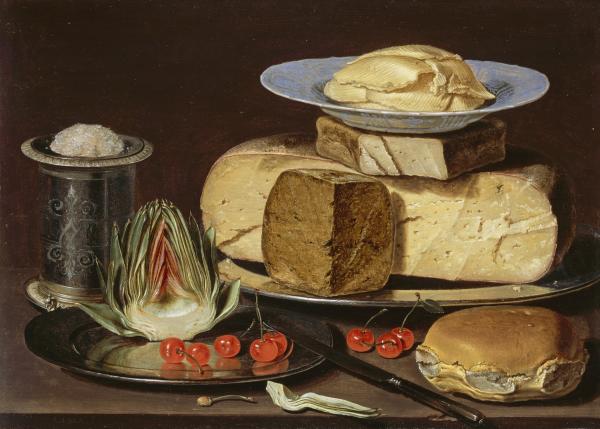For the series LACMA Favorites, we’re sharing highlights from LACMA’s collections chosen by staff from across the museum.
Butter, cheese, bread, salt, artichoke, cherries. A still life painted 500 years ago. By a woman, one of my art crushes, Clara Peeters. I have visited this painting again and again for over 20 years.
Today, my mind’s eye first moves to the dish of butter precariously perched on a stack of cheese. A porcelain periwinkle blue dish painted so precisely that I see the shadow of the cheese under the plate. This is not 21st-century butter, manufactured and molded. This butter was scraped out of the churner. Each slice, a pale-yellow petal.

Clara painted light magnificently. I am always astonished at how much illumination and reflection is in this painting, which was made in the early 1600s. Way before electricity and gas lanterns. The silver shines like water. Translucent cherries scattered on a silver platter positively glow and reflect as if they have their own inner illumination.
Speaking of cherries, what about the cherry pit with the stem still attached? How do you eat a cherry and keep the stem on the pit? It’s an odd detail that I can’t quite figure out. Painters of the Dutch Golden Age often included a dead flower, an insect, or a half-eaten piece of fruit in their compositions to signify impermanence and as a memento mori. Artists do love to leave hidden messages, like inside jokes, spiritual lessons, or tributes to a lover, friend, or patron. Is this an uncommon variety of cherry or a variety that no longer exists—is that why the stem is attached? Was it an aesthetic choice? I don’t need to know; I am satisfied just thinking of the possibilities.



